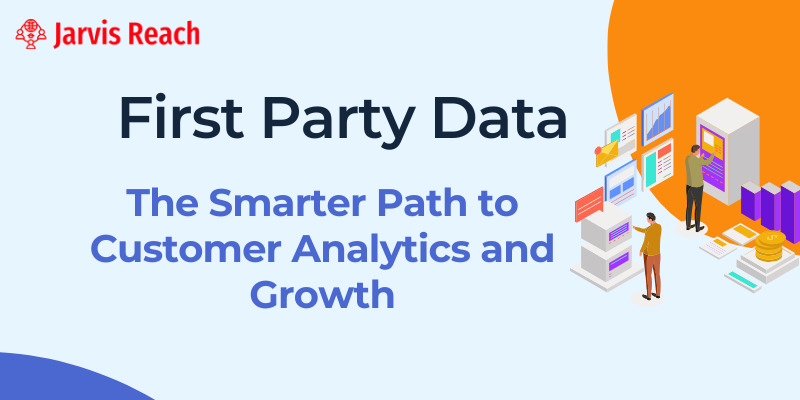Introduction: Why First Party Data Matters Now More Than Ever
Picture this: You’ve just launched a new campaign, and despite investing in flashy creatives and catchy headlines, the results are… underwhelming. Frustrating, right? The culprit might not be your campaign itself it could be that you’re relying too heavily on third party data, hoping it will magically guide your decisions.
In today’s privacy-focused world, brands that prioritize first party data are the ones seeing real results. Unlike third party sources, first party data is collected directly from your audience think website interactions, app usage, or newsletter sign-ups. It’s accurate, consent-driven, and incredibly rich. If leveraged well, it can transform how you understand customers, refine campaigns, and grow revenue.
Let’s dive into five actionable strategies that every brand can implement to make the most of their first party data.
1. Supercharge Customer Analytics
Understanding your audience starts with customer analytics. First party data allows you to track behavior directly, giving you insights that third party data simply can’t match.
For example, e-commerce brands can see which products are most viewed, abandoned in carts, or frequently purchased together. By analyzing these trends, you can tailor promotions, recommend products intelligently, and even predict future buying behavior. Tools like CRM systems enhanced with crm enrichment help centralize and visualize this data, making it easier to act on insights.
Pro tip: Don’t just collect data interpret it. Look for patterns that tell a story about your customers’ journey.
2. Strengthen Identity Resolution
Ever faced the frustration of fragmented customer profiles across multiple platforms? This is where identity resolution comes in. By linking data points from emails, mobile apps, and website visits, you can create a unified profile for each customer.
Imagine sending a personalized outreach email about a product a customer was browsing last week. The chances of engagement skyrocket because your message feels relevant and timely. Without identity resolution, you risk generic messaging that feels impersonal, no matter how creative your campaigns are.
3. Invest in Contact Enrichment and Data Enrichment
Having a list of customer contacts is just the beginning. The real power comes from contact enrichment and data enrichment. By appending additional details like job titles, company size, or recent activity you turn a simple email address into a goldmine of actionable insights.
Consider a B2B software company that uses enriched data to identify decision-makers within a target organization. This approach enables more effective follow-ups and tailored solutions. The same principle applies to B2C brands: enriched data helps you segment audiences more precisely, boosting engagement across campaigns.
4. Implement Consent Management and Zero Party Data Collection
Privacy isn’t just a regulatory requirement it’s an opportunity. By integrating consent management tools, you ensure your first party data collection is ethical and compliant. But don’t stop there. Encourage your customers to share zero party data information they willingly provide, like preferences, feedback, or product interests.
Zero party data is a gold standard for personalization because it reflects explicit customer intent. For example, a subscription box service asking users to choose themes they love will have much higher engagement than a service guessing preferences based on browsing history alone.
5. Optimize Follow-Ups and Outreach Email Campaigns
Even the best data is only as good as how you act on it. Use your enriched profiles to design thoughtful follow-ups and outreach email campaigns. Personalization goes beyond inserting a name it’s about referencing past behavior, relevant products, and even predicted needs.
For instance, after a customer abandons their cart, a timely, personalized email highlighting complementary products or limited-time offers can dramatically increase conversions. By combining first party data with smart outreach strategies, you’re building trust and delivering value simultaneously.
Conclusion: Take the First Step Toward Smarter Marketing
First party data isn’t just a buzzword it’s the foundation of modern marketing. By implementing strategies like robust customer analytics, identity resolution, contact enrichment, consent management, and personalized follow-ups, brands can turn raw data into meaningful action.
Start small, experiment with one strategy, and expand as you see results. With first party data at the core of your marketing approach, your campaigns will be more relevant, efficient, and, most importantly, human.



